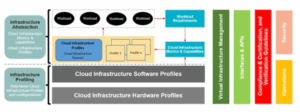By: Beth Cohen, 2025 Anuket TSC Chair
Quinnipiac, the latest version of Anuket, is available now!
Anuket Overview
Anuket, an LF Networking project active since 2017, occupies a unique position in the telco industry because it integrates operator requirements collection and normalization in concert with open source software development, all under a single initiative. The Anuket community includes subject matter expert representatives from telco operators and their technology suppliers who are very cognizant of the “real world” challenges of the industry. The Anuket community prioritizes outreach to the wider community, initializing or strengthening Anuket’s relationship with other LFN projects as well as with several industry organizations like GSMA, ETSI, CNCF, Open Infrastructure Foundation, Sylva, among others.
Anuket Quinnipiac
As the telecom industry evolves, some of the side projects such as vinperf, have been archived due to lack of development activity and contributions, however, the core documentation and modeling workstreams continue to strengthen the container-based open infrastructure specifications and implementations – an area increasingly important to the telecom industry. With the help of an LFN intern this past summer, the Anuket documentation has been cleaned up and reformatted, so it is easier to release through automation. Some of the efforts incorporated into the Quinnipiac Release include:
RM

- Updated SMT (Simultaneous Multi-Threading) in 5 requirements in Chapter 5, in view of new changes to the chips.
- Updated vDU requirements related to real-time and PTP requirements (alignment with ORAN), in Chapter 2
- Refreshed references and links in the whole of RM document
- Several language and editing corrections have been done
- Automation of the GSMA documentation creation of the RM related specification (GSMA specification NG.126) has been completed.
RA2
- Update k8s release – 1.31
- Specs for Caas manager interface and operations
- real-time and PTP for vDU
- Simultaneous Multi Threading (SMT) requirement and specs
- Synchronise with Project Sylva (VDU reqs and specs)
- Merge RC2 in RA2
- Implement automated vale proofreading & modern naming / terms
- Validating repo against OpenSSF Scorecard
In this release the Reference Kubernetes architecture was updated to align with the newest Kubernetes release, and added important requirements and specifications for the Lifecycle Management of Kubernetes Clusters, for use in Radio Telco Cloud and use of SMT in modern CPUs. The team also improved the proofreading and consistency of the Document, as well as merging the RC2 components into the RA2 document. The documentation is now synchronised with Project Sylva by adding VDU requirements and specs.
Functest
The Functest sub-project of Anuket is constantly updating Functest-Kubernetes a test framework for automatic verification of Kubernetes clusters. Functest-Kubernetes follows the release schedule of Kubernes and released its 1.32 version in the timeframe of Quinnipiac. Functest also maintains and updates Xtesting, an extensible framework for integrated platform testing.
Leadership
The Anuket members elected the 2025 Technology Steering Committee and Chair: Beth Cohen. On behalf of outgoing 2024 TSC Co-chairs, Gergely Csatari and myself, we would like to thank all Anuket contributors for their fantastic efforts in 2024 and wish the new TSC and the new Chair all the best in their 2025 work!
Summer Mentoring
In the summer of 2024 the Anuket project used the opportunity to have a summer trainee. During the fruitful collaboration of Anuket and our trainee we finalized the fully automatic generation of GSMA document format and manually checked all the links of the Anuket Reference Model, moved the Anuket Documentation repo from Gerrit to GitHub and built a script to collect health metrics of the Anuket sub-projects.
Project Future Direction
While Anuket is a mature project that has been active for over 6 years, as the industry has evolved, active participation in the project has waned. The Anuket team sees great value in continuing to maintain the project for the long term, however, the current level of resources devoted to the project is not sustainable for the long term. The TSC is looking for fresh ideas on how to maintain the project going forward.